Who Built the Pyramids? The Truth About Egyptian Laborers

Forget the popular myth of slaves building the pyramids. Archaeological evidence reveals the truth: the pyramids were built by tens of thousands of skilled Egyptian citizens. This article explores the corvée system, a form of state labor where farmers worked during the Nile’s flood season. We uncover their daily lives in organized workers’ villages, their wages in bread and beer, and the medical care they received, proving they were a valued workforce building a monument for their god-king.
The Backbone of Egypt: A Year in the Life of an Ancient Egyptian Farmer

They were the engine of the empire. This blurb follows a year in the life of the ancient Egyptian farmer, whose world revolved around the three seasons: Akhet (the flood), Peret (planting), and Shemu (the harvest). Discover their life in mud-brick villages, their simple diet, and the heavy crop taxes that fed a nation.
Masters of Their Craft: The Artisans of Deir el-Medina
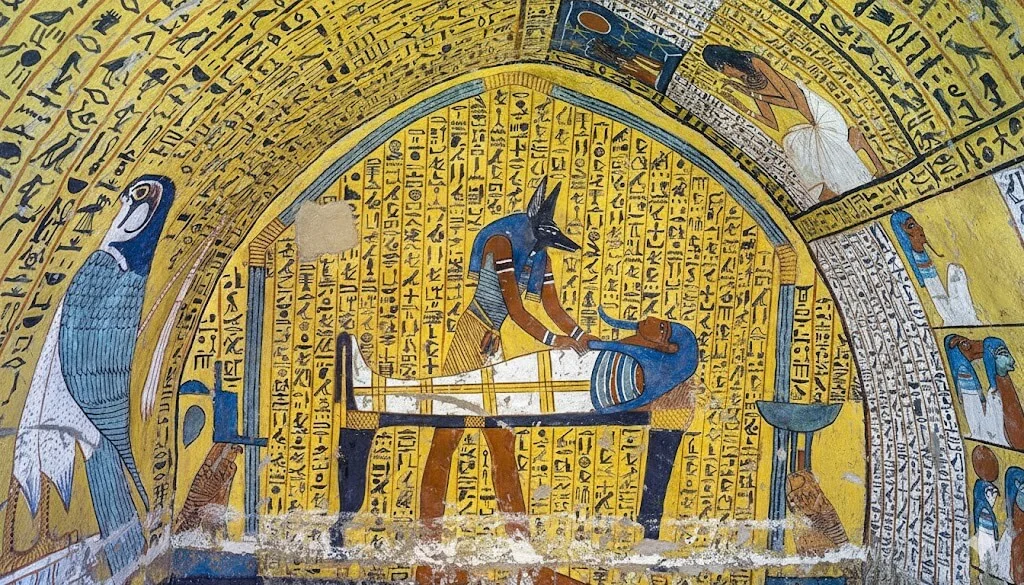
Go beyond the golden treasures and discover the lives of the men who made them. This blurb delves into the “Village of the Workmen,” Deir el-Medina, a unique community of elite artists and craftsmen. We uncover their day-to-day routines, their specialized jobs, their family life, and the surprising literacy that allowed them to leave behind thousands of personal notes, jokes, and complaints.
Egypt’s Bronze Shield: The Life and Career of an Egyptian Soldier
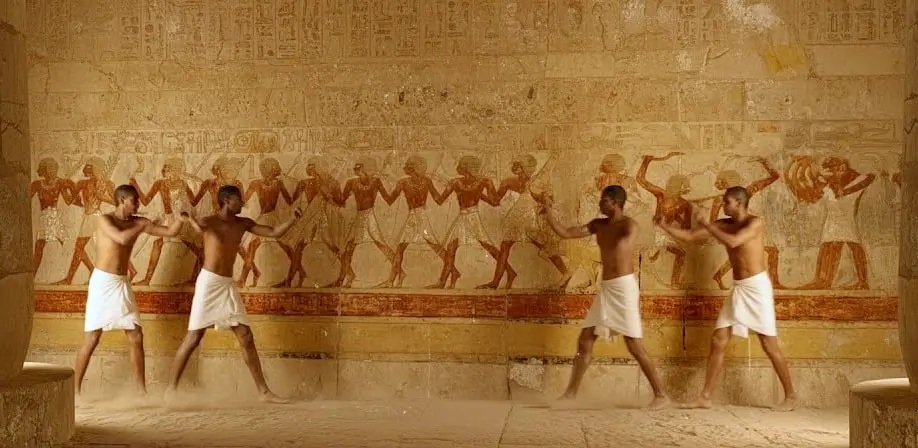
We see them marching in eternal processions on temple walls, but who was the ancient Egyptian soldier? This summary delves into the human experience of military life, examining the journey from a nefer (recruit) to a seasoned veteran. It covers the bonds of brotherhood, the logistics of rations and pay, the terror of the battlefield, and the social mobility that a successful career could offer. This is the story of the loyalty, sacrifice, and ambition of the men who served the god-king.
The Vizier in Ancient Egypt: Prime Minister of the Nile
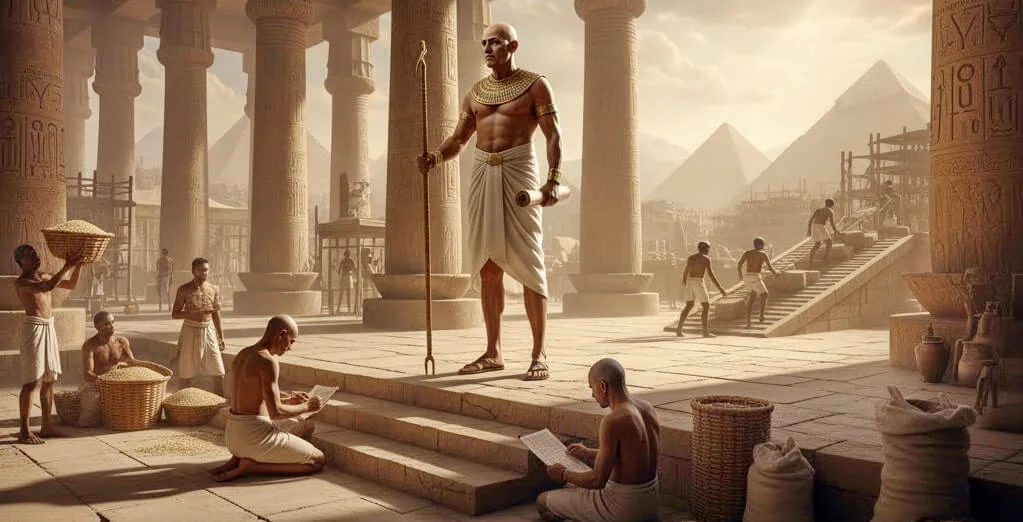
Step behind the throne of ancient Egypt to discover the power of the Vizier. “The Vizier: Prime Minister of the Nile” reveals the functions of the Tjaty, the Pharaoh’s indispensable right hand and the true engine of the state. This summary delves into the Vizier’s immense responsibilities as the head of the legal system, chief administrator of the provinces, and coordinator of the national economy, demonstrating how this “prime minister” translated the Pharaoh’s divine will into the daily reality of the empire.
A Day in the Life of a Pharaoh: The Toughest Job in Egypt
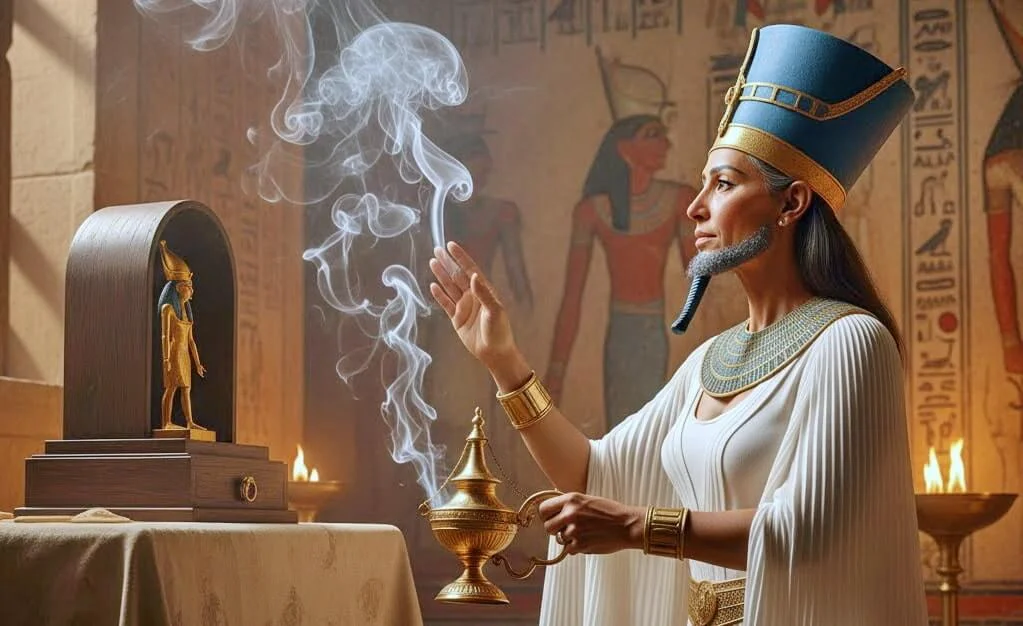
Forget the life of pure luxury. Discover the pharaoh’s real job. This article delves into the demanding “day in the life of a pharaoh,” exploring their daily duties as a high priest, supreme judge, and military commander, and the crushing divine burden they carried from sunrise to sunset.
Hermopolis: The Ancient City of Wisdom, Thoth and the Ogdoad
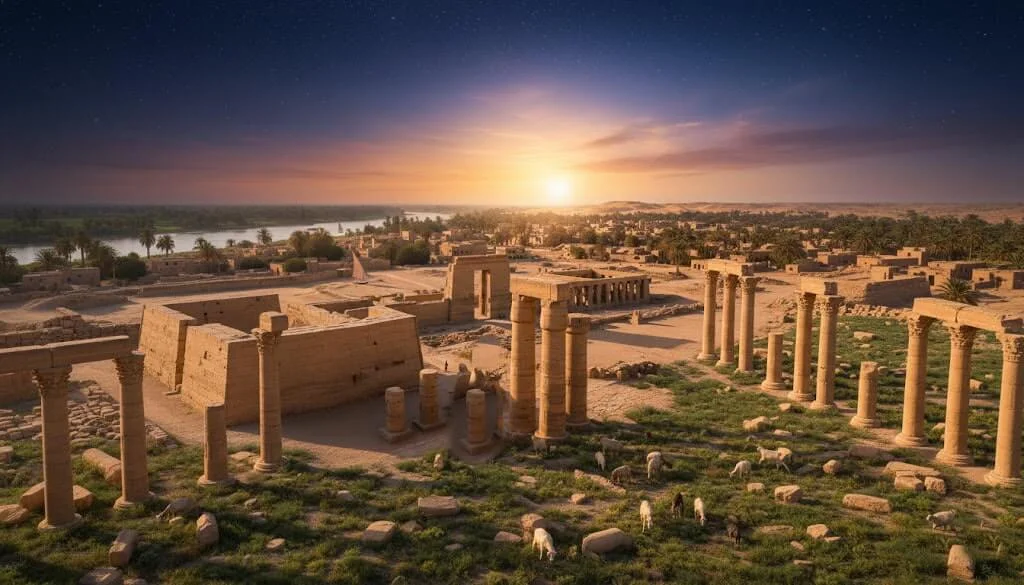
Explore the Ancient City of Hermopolis (Khmunu), a strategic and intellectual capital in Middle Egypt renowned as the supreme center for the cult of Thoth, god of wisdom and writing. Uncover the city’s profound theological legacy as the birthplace of the Ogdoad mythology, detailing how eight primordial chaos gods stirred the waters of Nun to spark creation. Discover how Hermopolis survived the religious threats of Amarna, maintained its power through its scribal schools, and endured as Hermopolis Magna under the Greeks, leaving behind significant archaeological remains that confirm its lasting influence on Ancient Egyptian Cosmology and intellectual life.
The First King’s Fall: Betrayal in the Myth of Osiris and Seth
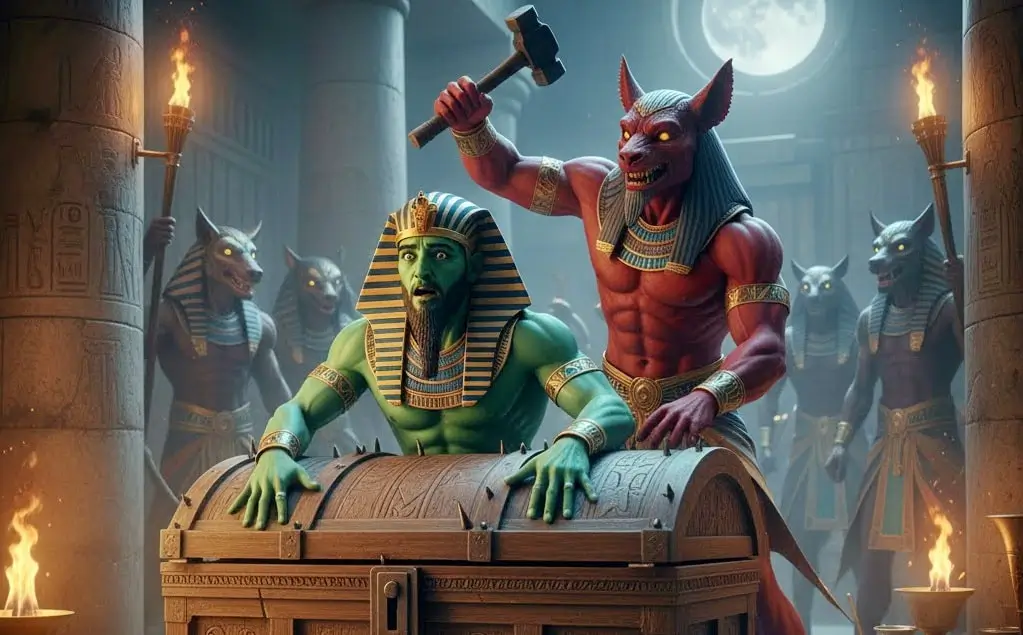
Explore the tragic Osiris and Seth Myth, the core narrative of Egyptian religion, detailing how the benevolent first king, Osiris, was betrayed and murdered by his jealous brother, Seth. This foundational act of treachery, which involved dismemberment and scattering, plunged the world into chaos, yet simultaneously set the stage for resurrection, kingship, and the promise of the afterlife.
Creation by Command: The Ptah Creation Myth of Thought and Speech
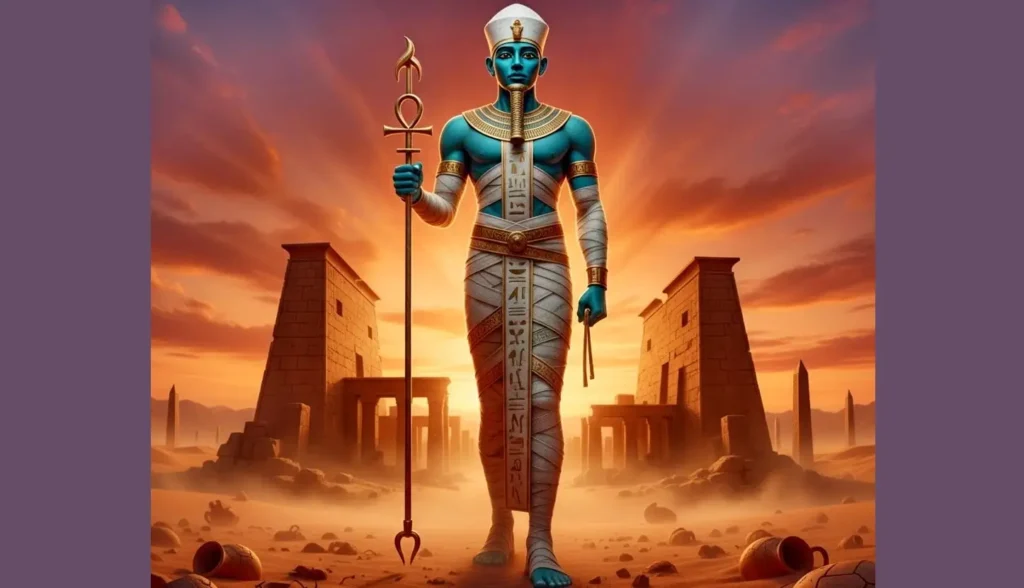
Uncover the Ptah Creation Myth from Memphis, the most philosophical of all origin stories. It details how Ptah designed the entire cosmos, the gods, and all life not by physical effort, but by first conceiving the structure in his heart and then commanding it into existence with his divine speech. This concept establishes the ultimate supremacy of intellect (Logos) in Ancient Egyptian Cosmology.
The Primal Eight: Unveiling the Hermopolis Creation Story (The Ogdoad)

Explore the Hermopolis Creation Story and its focus on the Ogdoad, the eight primordial chaos gods. These four male-female pairs, embodying water, darkness, infinite space, and hiddenness, stirred the waters of Nun until their chaotic fusion generated the original light. The Ogdoad mythology thus details how the raw elements of the universe collaborated to create the sun god and spark the beginning of all ordered existence.
The Breath of Creation: Shu, God of Air and Cosmic Separation

Unpack the essential role of Shu God of Air, the primordial deity who embodies the atmosphere and breath of life. Discover his pivotal mythological act: separating the embracing Earth god Geb and Sky goddess Nut. As the eternal cosmic pillar, Shu upholds the structure of the universe, ensuring that light, space, and order (Ma’at) are maintained against the forces of chaos.
The Great Divorce: Unpacking Geb and Nut Mythology of Earth and Sky

Unravel the essential Geb and Nut Mythology, which dictates the physical structure of the cosmos. Discover how the god of air, Shu, was commanded to separate his children—the embracing Earth god Geb and the Sky goddess Nut—to create the necessary space for life. This mythological divorce finalized the cosmic axes, moving the universe past the primordial chaos of Nun.
